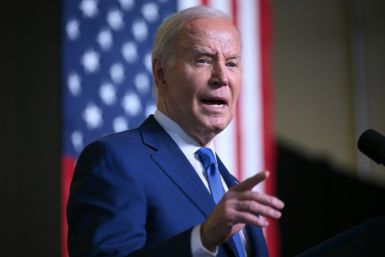Global Markets Overview – 11/11/13
China on the front foot
Macro excitement is back making front page news as the US, China and Europe produce varying arrays of macro data.
The US hit New York Fed president Charles Evans' target employment change number of 200,000 jobs added with a 204,000 print in October and revised up the September's print to 163,000. However, the unemployment rate rose to by 0.1% to 7.3% from post GFC lows of 7.2%. The inevitable taper debate took off once more and bets on which month rise.
Judging by the movements in the bond market last week the timeline to taper is shorting by the day. Ten-year notes saw yields rising to 2.71% and the as the biggest weekly move since July this year when expectations for a September moves were practically built in. The hot money will start to shift from risk if data continues to support Fed members' expectations.
China saw industrial production growing by 10.3% year-on-year (ahead of expectations) completing the hat-trick of 10% plus months and in the process, the longest double digit stretch since late 2011. The central government is currently convening in Beijing for the 'Third plenum' economic summit to discuss medium-term economic policies that have been well flagged and will be hugely beneficial for the nation and the region.
Europe on the other hand went the other way and reduced refinance rates to record lows as it looks to address the structural 'deflationary issues' present in the zone. Rates are now at 0.25% and the comments from Mario Draghi suggest it could move further if they don't see a genuine change in the current trend good for the EUR however the limp growth in the region is a concern for nation such as China that rely on US and European consumption.
That brings me to Australia's central bank and the statement from last Thursday. China is cracking on the US looks to be moving closer and closer to a change in monetary policy which leaving the RBA with an interesting dilemma. If the US was to hold off tapering and China continues to beat expectations it will see the AUD remaining 'at elevated levels'. The statement certainly still suggests a rate cut is possible and the easing basis has remained, however I see that as jawboning for the AUD, not a creditable mover.
I believe Glenn Stevens and his board are waiting in hope the Fed moves sooner rather than later so that the USD can do the heavy lifting form them seeing the AUD moving to levels it is more comfortable with, as housing and inflation remain firmly on the other side of the debate for a hold call and even some suggesting a rate hike.
What I will say is right now, of the three major macro headline grabs; China is the most interesting. I stated that November would be a cherry red month with a small to moderate pull back of 50 odd points. At 5400 that's only a 1% move before over $14 billion in dividends are returned to shareholders in December from the banks. China however could make all the difference to this call.
The numbers from industrial production coupled with the fact inflation is inflation was below the central government's expectations will mean the scope for further sustained growth is well and truly on the cards.
Therefore, looking to the third plenum economic forum changes to medium-term policies that encourage increased urbanisation by changing housing regulations, erasing the one child policy along with fiscal changes in the relation between central and local governments will all produce sustained medium and longer-term economic changes.
Increased urbanisation will mean China can start to switch from an exporter to consumer nation. It can start to look internally for growth rather than relying on developed economies to consumer their goods. This will start to safeguard China from global dips and see China shifting up the manufacturing ladder towards a high-tech manufacturing nation. China certainly has the hallmarks of Japan 25 years ago, let hope the economic forum brings the changes most Chinese economists are hoping for and have flagged since the new government took over.
Ahead of the Australian open
Ahead of the open we are calling the ASX 200 up 45 points to 5445 (+0.83%) as Asia gets the chance to react to the macro data from China. BHP's ADR is suggesting the stock could punch through $38 to $38.28 (+0.86%) even with iron ore sliding back to $135.90.
What may temper the moves is the speculation around the Federal Reserve; taper talk will continue to follow markets and with such strong numbers in October despite the fact the US government was in shutdown could see the hot money start to slide out of risk markets such as equities.
It is also Remembrance Day and several major nations are observing public holidays, including the US, so moves and volumes will be light. We will have to wait for Wednesday morning to see the full effects of the US employment data and the speculation around the Fed.
Market | Price at 6:00am AEST | Change Since Australian Market Close | Percentage Change | |
AUD/USD | 0.9389 | -0.0078 | -0.82% | |
USD/JPY | 99.2300 | 1.0950 | 1.12% | |
ASX (cash) | 5445 | 44 | 0.81% | |
US DOW (cash) | 15753 | 130 | 0.83% | |
US S&P (cash) | 1770.2 | 18.1 | 1.03% | |
UK FTSE (cash) | 6737 | 70 | 1.05% | |
German DAX (cash) | 9092 | 53 | 0.58% | |
Japan 225 (cash) | 14263 | 169 | 1.20% | |
Rio Tinto Plc (London) | 32.83 | -0.11 | -0.35% | |
BHP Billiton Plc (London) | 19.65 | -0.04 | -0.18% | |
BHP Billiton Ltd. ADR (US) (AUD) | 38.27 | 0.32 | 0.84% | |
US Light Crude Oil (September) | 94.34 | -0.00 | -0.01% | |
Gold (spot) | 1289.10 | -21.8 | -1.66% | |
Aluminium (London) | 1816.50 | -9 | -0.49% | |
Copper (London) | 7158.50 | -14 | -0.20% | |
Nickel (London) | 13899.0 | -194 | -1.37% | |
Zinc (London) | 1907.50 | -6 | -0.30% | |
Iron Ore | 131.3 | -0.5 | -0.38% | |
| Nine Entertainment Grey Mkt | $2.60 | +0.10 | +4% |
[Kick off your trading day with our newsletter]
More from IBT Markets:
Follow us on Facebook
Follow us on Twitter
Subscribe to get this delivered to your inbox daily






